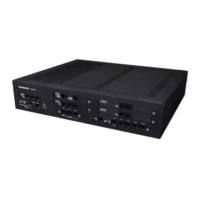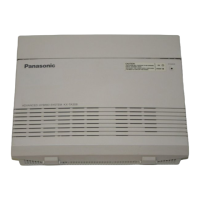Operator Service can be structured as a cascade so that if Operator 1 cannot take the call, it goes to Operator
2. If that fails, the call goes to Operator 3. If that fails, the caller can record a message. At each stage, there
are other options for busy cases and no
-answer cases.
• Busy Coverage Mode
Determines how calls to an operator will be handled when the line is busy. The Busy Coverage options
are: Hold, No Answer Coverage, Call Waiting, and Disconnect Message.
• No Answer Coverage Mode
Determines how calls will be handled when an operator does not answer within the time specified for
"Operator No Answer Time". The No Answer Coverage options are: Caller Select, Leave Message,
Disconnect Message, and Next Operator.
PC Programming Manual References
23.1 UM Configuration—[4-1] Service Settings—Caller ID / PIN Call Routing—23.2 UM Configuration—[4-2]
Service Settings—Parameters
→
Operator Service—Operator’s Extension
→ Operator Service—Busy Coverage Mode
→ Operator Service—No Answer Coverage Mode
Operating Manual References
Manager Operation
2.2.2 Message Manager Features
—
Customizing the Message Manager’s Mailbox
20.1.66 Unified Messaging—Password Administration
Description
Allows the System Administrator or System Manager to clear a subscriber password
(so that a new one can
be assigned).
Operating Manual References
Manager Operation
2.2.1 System Manager Features—
Setting Up Mailboxes
20.1.67 Unified Messaging—Personal Custom Service
Description
Allows a subscriber to use the following Custom Services in his or her Personal Greeting
(Personal Custom
Service):
• Transfer to Mailbox
• Transfer to Extension
• Transfer to Voice Mail Service
• Transfer to Automated Attendant Service
• Custom Service
• Transfer to Operator
• Transfer to Outside
• Page the Party
Document Version 2016-03 Feature Manual 423
20.1.67 Unified Messaging—Personal Custom Service

